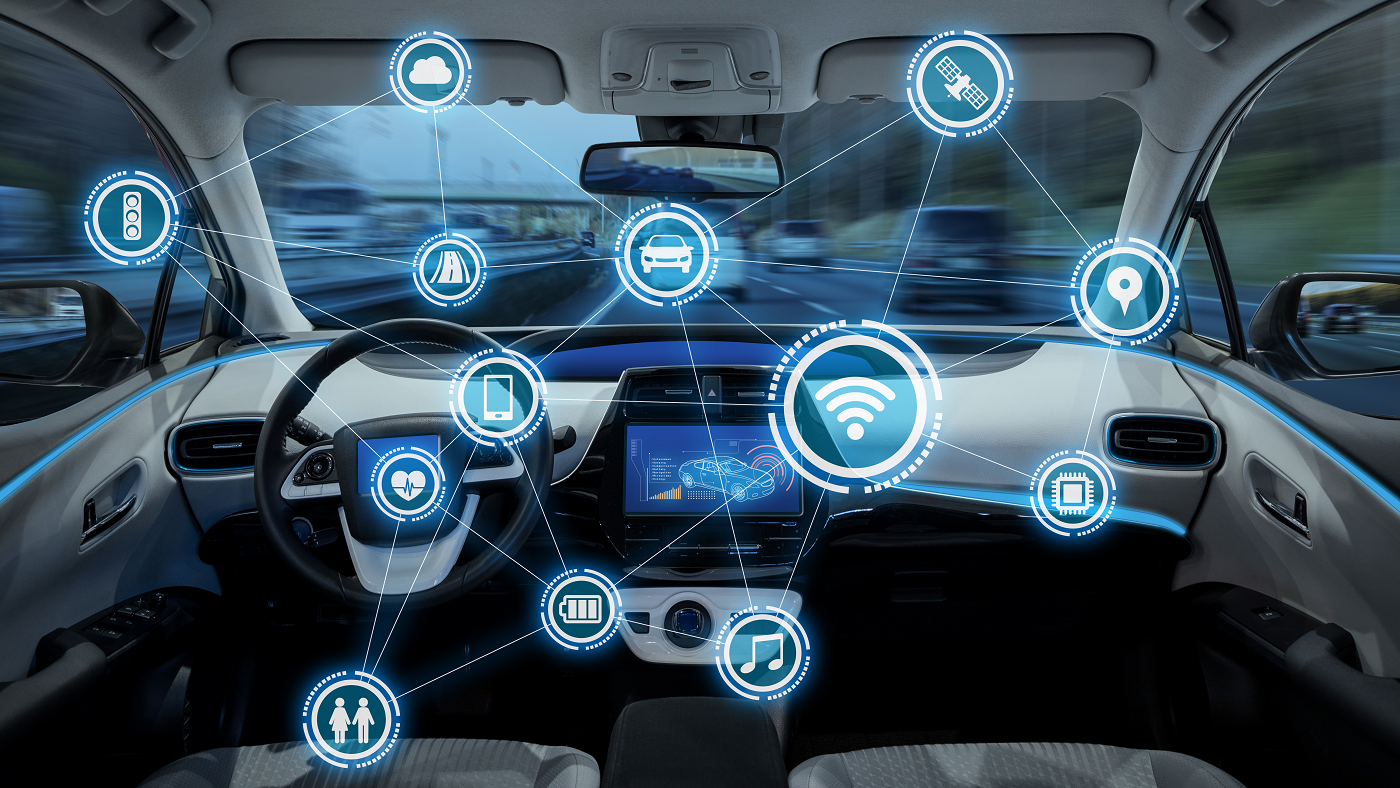On the way out of his front door, Michael grabs his car keys, wallet, and phone. He opens his vehicle app, taps a few commands, and his car is unlocked with the engine running and the climate controls adjusted before he even grabs the door handle. That and other tech-enabled conveniences are pretty cool. But it’s other smart devices connected to or built into Michael’s vehicle that make his drive to work really special and offer more than just convenience: smart devices for vehicle safety.
Smart devices, smart choices
Michael is curious how he can lower his vehicle policy rate, so he calls his agent, Ellery. She suggests that Michael install a device into his on-board diagnostics (OBD) port that can monitor driving stats like mileage, speed, braking, emissions, and, sometimes, location. Once collected and analyzed, this data can not only lower Michael’s policy rate, but it can also help the industry better learn how driving habits correlate to claims activity—or the lack thereof.
There are a few different types of OBD devices available on the market:
- Carrier-provided OBD devices: When devices are provided by a carrier, there is typically a phone app that collects driving data via Bluetooth and sends it back to the carrier for analysis.
- Carrier-provided phone apps: Carriers have now developed phone applications that record very similar data to an OBD device. Like the OBD device, the phone app collects data as the individual drives and sends it back to the carrier for analysis.
- Personal OBD devices: Consumers can purchase OBD devices that are unaffiliated with any specific carrier. Drivers collect the data on their own, and based on the structure of their policy, send data files to either their agent or carrier for analysis. Some personal OBD devices also connect to phone applications that allow drivers to see data in real time.
Once Michael has the information from the OBD device, he can give it to Ellery to help her and his carrier better understand Michael’s risk level as a driver. If Michael regularly slams on the brakes or speeds, his insurance premium may cost more at renewal time because his risk of being involved in an accident is higher. Whereas, if Michael regularly brakes slowly and drives the speed limit, his premium may cost less when renewal comes up because his habits are considered lower risk.
Beyond the ODB
The OBD device isn’t the only way that Ellery can up her game as an independent agent to save her client some money. In Michael’s case, he has doors that automatically lock after 10 minutes if the key fob is past a certain distance from the car. This helps to prevent theft of items in the car or the car itself. Additionally, he installed a GPS device that can help police locate the car should it be stolen. Just as safe driving habits tell Ellery that Michael’s insurance premium should be lowered, the installation of anti-theft devices can lower his insurance premiums as well.
Many safety technology features are no longer a luxury and are fast becoming standard, like blind spot assistance and lane departure warning. LexisNexis found that “ADAS [advanced driver assistance systems] equipped vehicles showed a 27% reduction in bodily injury claim frequency and a 19% reduction in property damage frequency.” As these devices become more prevalent, agencies and carriers will have more data to draw from to accurately predict risk and price policies.
Smart devices come with a risk
Even with the savings that smart devices for vehicles bring, there are a few safety concerns with increased connectivity. “The primary safety risk with connected cars is the possibility of remote control of the car,” according to Technology Safety. Besides risk of theft or collision, the option to control a car remotely could cause bodily harm to the driver—whether intentional or not.
When it comes to collecting data, there is always a risk of that data being breached, stolen, or misused. There are inherent privacy risks when it comes to allowing a third party to collect and store information, especially information like location tracking. However, most of these risks can be mitigated with regular firmware updates, strong passwords, and by using devices only from vetted and trusted vendors.
Smart device data, smart policy pricing
As independent agents continue to include data from smart devices for vehicles into their processes, they’re expanding their pricing horizons to clients. According to Insurify, "Most drivers can expect about a 2% to 3% discount per safety feature” when it comes to the pricing of policy quotes. For a client, this could be the difference between renewing a policy or shopping for a better price. Ellery can lower Michael’s insurance premiums because the data shows that his smart vehicle devices will lower his risk of accident and theft. He chose to renew his policy—at a lower rate—thanks to the integration of connected technology into his vehicle and into Ellery’s workflow.
Cars are only becoming smarter, and the data from those cars is becoming more available to agencies and carriers. The risk of accidents is lowering thanks to smart devices in vehicles, but the incident of agencies and carriers improving their policy quotes is only rising.


